About Natural Way Chiropractic
Dr. Eddie Hansen opened the first Natural Way Chiropractic office in 1995 in Bellingham Washington. Over the next decade Dr. Hansen, and Associates developed the Natural Way Healing System used today in all Natural Way Chiropractic locations. Every month, thousands of patients use Natural Way’s Healing System to get back to and keep an active lifestyle.
Natural Way Chiropractic is also an employe owned company as of 2023.
Before You Arrive
Going to the doctor can be a stressful time for many people because they don’t really understand what’s happening during their visit. Doctors will often speak in medical terms to their patients, forgetting or ignoring the fact that their patients probably have no clue as to what they are really saying; test results and X-Rays are usually skimmed over, with no time being taken to give a thorough explanation to the patient. At Natural Way Chiropractic, we reject this behavior, and believe in clear and effective communication between our patients and us. Starting with your very first visit, we will make sure that a crystal-clear channel of communication is established between us.
Your First Visit
When you walk into any Natural Way Chiropractic’s office for the first time, our friendly staff will greet you warmly. We will then have a consultation session with you, along with a complete spinal scan, to assess your reasons for coming in and what treatments will be needed to start your healing. We will also take any necessary X-Rays, and evaluate your insurance options. You can take a look at the list of insurance companies that we work with on our Insurance page. During our examinations and spinal scans, we respect you and endeavor to make you as comfortable as possible. We will make sure that your first visit to our Bellingham office is a positive and refreshing experience.
Your Second Visit
When you visit Natural Way Chiropractic’s office for the second time, the first thing we will do is discuss the results of any X-rays and spinal scans from your previous visit with you. When we discuss your X-ray and spinal scan results with you, we will speak in a clear and understandable manner; any unfamiliar medical terms will be carefully explained, and all questions are welcome and will be thoroughly answered. Additionally, we will assist you in establishing a financial plan that suits your budget, and will also give you a detailed explanation of our client care. Natural Way Chiropractic highly values its patients and our client care policies are designed to maintain a respectful relationship between us, and also ensure that you receive excellent care at an affordable price.
Further Care
After your two initial visits to Natural Way Chiropractic, you will continue to receive excellent and affordable chiropractic care, with regular periodic follow-up exams to ensure any problems are promptly resolved. Questions and concerns are always welcome, and our certified and trained staff will readily assist you to ensure that your care is comprehensive and completely relaxing.
How Chiropractic Heals
The decisions we make and the actions we take in each moment of our day affect our bodies and can slowly produce problems that may not show symptoms. What we eat, how we sit, the work that we do with our bodies, and even the way we emotionally react to a situation, can have long-term impacts on our wellness. If you spend your days sitting at a desk, the way you hold your head or place your arms can have a major impact, not only on your neck and shoulders, but also on your whole body.
This is because the bundle of nerves that sends messages to every other part of our body, originates in our spinal column.
At the heart of our care to our patients is the Chiropractic. An adjustment is a procedure in which our trained specialists use their hands to apply a controlled force to a joint. The goal of a chiropractic adjustment is to remove nerve pressure by correcting structural alignment. This, in turn, reduces pain and improves your body’s physical function.
Education
The typical applicant at a chiropractic college has already acquired nearly four years of pre-medical undergraduate college education, including courses in biology, inorganic and organic chemistry, physics, psychology and related lab work. Once accepted into an accredited chiropractic college, the requirements become even more demanding — four to five academic years of professional study are the standard. Because of the hands-on nature of chiropractic, and the intricate adjusting techniques, a significant portion of time is spent in clinical training.
Techniques
The chiropractors at our offices utilize a variety of techniques to treat the various afflictions of their patients. Building only on proven chiropractic methods that have a history of success, Natural Way Chiropractic delivers excellent care that will heal your body and alleviate your pain – without medication!










